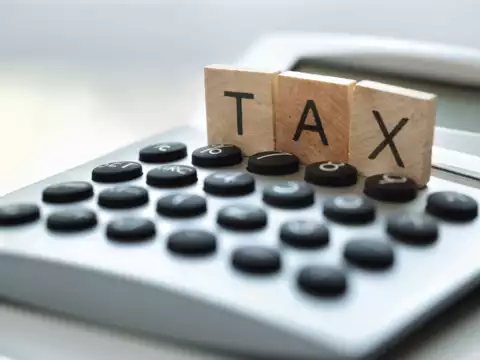As the tax season rolls around, Canadians across the country eagerly anticipate the arrival of their income tax refunds. For many, it’s a much-needed financial boost that can help cover expenses, pay down debt, or even fund future goals.
However, navigating the intricacies of the Canadian tax system can be overwhelming, and without a solid understanding of the available strategies and opportunities, taxpayers may inadvertently leave money on the table.
In this comprehensive guide, we’ll delve into the various tactics and considerations that can help you maximize your income tax refund in Canada, ensuring you keep more of your hard-earned money in your pocket.
| Important Links |
| 1. Top 10 High-Paying Jobs in Capital Goods |
| 2. Top 14 Well-Paying Jobs in Public Utilities 2024 |
| 3. Highest-Paying Finance Jobs in 2024 |
| 4. High-Paying Jobs in the Consumer Services Sector |
1. Keeping Accurate Records
At the heart of any successful tax strategy lies the foundation of accurate record-keeping. Throughout the year, it’s essential to maintain detailed records of your income, expenses, and deductions. This includes everything from pay stubs and invoices to receipts for charitable donations, medical expenses, and business-related costs.
By diligently documenting your financial transactions, you’ll not only have a clearer picture of your overall financial health but also provide valuable evidence to support your claims for deductions and credits come tax time.
2. Exploring Tax Credits and Deductions
One of the most effective ways to reduce your taxable income and increase your tax refund is by taking advantage of the various tax credits and deductions available to Canadian taxpayers. These credits and deductions cover a wide range of expenses, including childcare costs, tuition fees, medical expenses, public transit passes, and more.
To ensure you’re making the most of these opportunities, it’s crucial to familiarize yourself with the eligibility criteria for each credit and deduction and keep track of any relevant documentation throughout the year.
3. Utilizing Registered Retirement Savings Plans (RRSPs)
Registered Retirement Savings Plans (RRSPs) are a cornerstone of retirement planning for many Canadians, offering both immediate tax benefits and long-term savings growth. Contributions made to an RRSP are tax-deductible, meaning they can lower your taxable income and potentially increase your tax refund.
Additionally, any investment income earned within the RRSP is tax-deferred until withdrawal, allowing your savings to compound over time. By maximizing your RRSP contributions each year, you not only save for your future but also reap the immediate rewards of a larger tax refund.
4. Considering Tax-Free Savings Accounts (TFSAs)
While RRSPs offer valuable tax benefits for retirement savings, Tax-Free Savings Accounts (TFSAs) provide a flexible and tax-efficient way to grow your wealth. Unlike RRSP contributions, contributions to a TFSA are not tax-deductible. However, any investment income earned within the account, including interest, dividends, and capital gains, is tax-free.
This means that while you won’t receive an immediate tax deduction for TFSA contributions, you can enjoy tax-free growth on your investments for years to come. By maximizing your TFSA contributions each year, you can create a tax-efficient source of income in retirement and potentially increase your overall tax savings.
5. Claiming Employment Expenses

For employed individuals who incur expenses related to their job that are not reimbursed by their employer, claiming these expenses on their tax return can result in significant tax savings. Common deductible expenses include home office expenses, work-related supplies, professional development courses, and vehicle expenses for work-related travel.
To qualify for these deductions, the expenses must be necessary to earn employment income and must not be reimbursed by the employer. By keeping detailed records of your employment-related expenses throughout the year, you can maximize your deductions and increase your tax refund.
6. Exploring Provincial Tax Credits
In addition to federal tax credits and deductions, many provinces offer their own tax credits and deductions, tailored to the specific needs and circumstances of their residents. These provincial tax credits cover a wide range of expenses, including education and tuition costs, home renovation expenses, and caregiver credits.
To ensure you’re taking full advantage of all available tax-saving opportunities, it’s important to research the specific tax laws in your province and understand the eligibility criteria for each credit and deduction.
7. Seeking Professional Advice
While navigating the Canadian tax system can be challenging, you don’t have to go it alone. Seeking professional advice from a qualified tax professional or financial advisor can provide valuable insights and guidance tailored to your unique financial situation.
A tax professional can help you identify overlooked deductions, optimize your tax strategy, and ensure compliance with all relevant tax laws and regulations. By leveraging their expertise and experience, you can maximize your income tax refund and secure your financial future with confidence.

